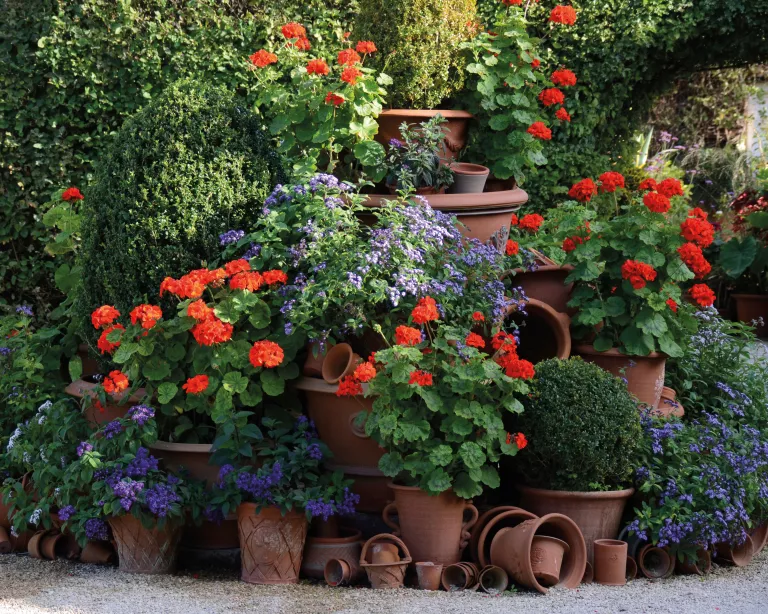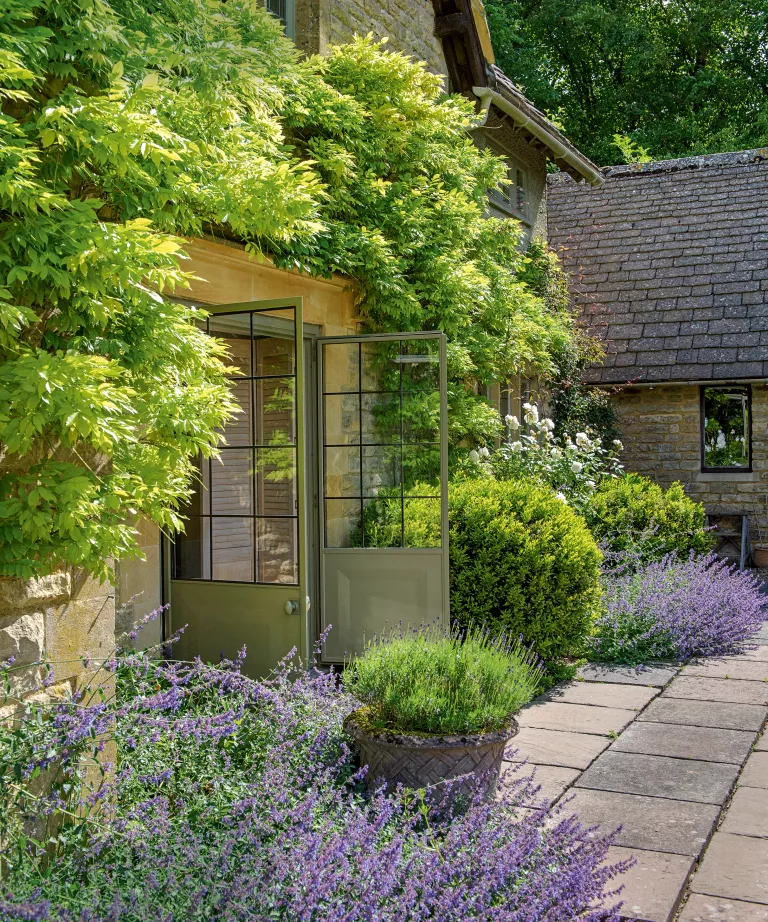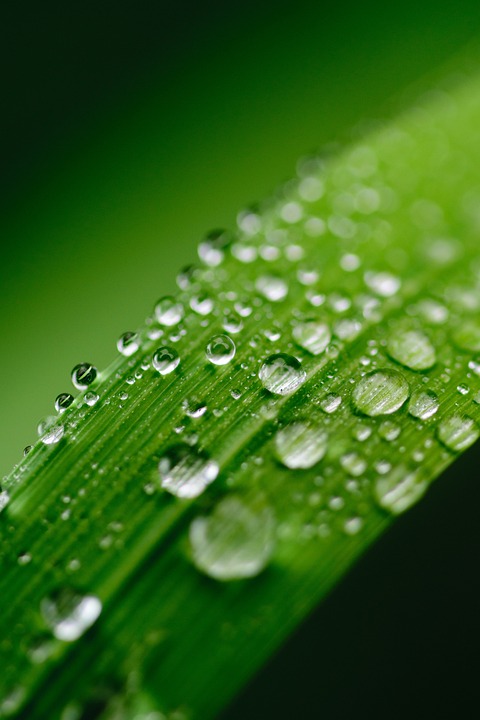Container gardening ideas – 12 display and planting tips
Some of the most significant changes you can make to your garden can be made with the help of some creative container gardening ideas.
Include planted containers as a critical component in your garden plans as they may give fast and easy colour to your backyard, a bare corner, a balcony, or a patio.
The plants in each container can be the same for a unified look, or they can be different so that you can switch them out for the seasons or have something that will always be a conversation starter. Plants with specific requirements, such as those that like acidic soil or particular feeding, can all be grown successfully in planters with the correct compost and feeding regime.
Planting in containers is another method for creating a little garden, as it permits gardening on balconies and roof decks.
CONTAINER GARDENING IDEAS – FOR YEAR ROUND DISPLAYS
Garden containers and planter boxes can be decorative and provide a new dimension to the overall look of your garden, but the plants themselves are what steal the show.
You can fill a patio planter with colour and excitement all summer long by planting various annual and perennial blooming plants selected for their spectacular flowers and unique growth habits (such as leaning toward the light or cascading over the sides).
However, the most fabulous fall flowers for pots can be shown in various creative fall planters, maintaining viewers’ attention well into the following year.
Indulge your inner flower child and plant for drama, aroma, and brightness; there is no one-size-fits-all formula, but there are some ideal plants for containers all year round.
1. DISPLAY A COLLECTION OF POTS AND PLANTERS

Typical gardeners use a wide variety of containers for their plants. Container gardens look best when planters of varying sizes and shapes are arranged in a tiered fashion, with containers made from the same material clustered together.
Consider the brick or masonry of your home, the local stone, and the colour scheme of your garden when purchasing new containers. As a result, the whole thing feels more cohesive and professional.
Many gardeners like to use terracotta because of its natural appearance and feel. Pick planters you want that will inspire you on your gardening quest.
The best part about gardening in containers is that you may rearrange your plants based on how things look or the time of year. Jim Keeling, an owner of Whichford Pottery, adds that customers may easily include new pots and plants into their collections of favourites.
2. INCLUDE MIXED PLANTING IN A LARGE CONTAINER

Plants in a large container can be used to make a stunningly gorgeous arrangement if you take care while selecting them.
“The same rules apply to complicated plantings of any size.” Whichford Pottery’s Jim Keeling notes, “We split the choice of plants into three categories to determine the form and structure of the planting.”
As a first step, pick a tall centrepiece. We then place a “midriff” of medium-height plants around this. Finally, we select trailing or low-growing plants to fill the space under the rim. But, we’re building a plant pyramid. He says, “These rules need to be altered according to the intended position of the pot; for instance, if we are designing for a site against a wall, the centrepiece will be placed at the back, rather than in the middle.
3. USE SHELVING OR STEPS FOR A TIERED DISPLAY

Use the steps, wall, or garden shelving you have by creatively placing plants in containers to make eye-catching focal points.
If you want to show off your plant collection, get a few of the same pot size and style. This classic trick has been refined since the auricular theatres of the Victorian era, yet it still impresses today.
You don’t have to break the bank to create a good impression; a spare ladder can do well as a multi-level shelf. Rotate the planters so that the prettiest ones are at eye level.
4. APPROACH CONTAINER GARDENING LIKE INTERIOR DESIGN

Isabelle Palmer, the owner of The Balcony Gardener and author of Modern Container Gardening, is an expert at making the most out of limited outdoor space.
Her ever-evolving landscape comprises variously sized and shaped planters and pots.
As with the interior of my home, I take the same care while planning my little garden areas and balcony garden ideas. Isabelle explains that the colour scheme of the plants can be influenced by artwork seen in a room that opens up to the garden.
“The garden is the fifth room; I decorate it to complement the others.” When it comes to small gardens and balconies, she says, “interior design is just as vital as landscape design.”
5. PLANT CONTAINERS WITH LOW MAINTENANCE SUCCULENTS

Select hardy succulents for a low-maintenance, all-year-round effect in wide-mouthed containers.
Select a range of houseleeks (also known as sempervivums) and low-growing sedums, with foliage in muted greens, mauves, pinks, and purples. Moreover, certain succulents will produce flowers, extending the planting’s visual appeal by an additional season.
Aside from knowing how to care for succulents in the winter, all you need is a sunny location with good drainage and some gritty compost to keep these plants alive and well all year round.
First, plug the drainage hole in the bottom of the container with crocks to ensure proper water drainage. Since gravel can soon become blocked with repeated watering, we recommend dishes instead, says Whichford Pottery’s Jim Keeling.
6. DESIGN A CONTAINER HERB GARDEN

Herbs are some of the most tolerant plants to try out in containers. Plant two or three kitchen herbs in a herb planter if you have a small yard or balcony. Pick your favourite culinary herbs and put them in decorative containers to show them off.
If you grow herbs like basil, parsley, and cilantro in little containers, you may pick from them as needed. Because of their rapid growth and long lifespan, shrubby herbs like rosemary and sage require a more substantial planting container.
6. CREATE A ‘PAINTERLY’ EFFECT WITH CONTAINERS

Isabelle Palmer says, “You need an organization to bring container gardening concepts together, but I enjoy a painterly element, too.”
Both gardening and painting are about constructing an image. Thus they share many similarities. Colour has always meant a lot to me, and I’ve always enjoyed painting. She continues, “Right now, the garden is where I find that outlet.”
If you’re going for a painterly effect, think about the colours of the flowers and the container together.
7. POT PLANTS FOR POLLINATORS

A few flower pots full of blooms that attract bees or butterflies can go a long way toward helping vital pollinators like bees.
Find attractive plants that provide nectar and add to your display. Fuchsias are endemic to South America, where they are pollinated by hummingbirds thanks to their abundant nectar.
Plant some fuchsias this summer if you want to attract longer-tongued Bumblebees to your garden. Some other flowers that produce nectar are borage, echium, lavender, and echinacea, all of which can be cultivated in pots.
8. USE CONTAINER GARDENING IDEAS TO INSPIRE CHILDREN

Get kids interested in gardening with easy potting projects using container gardening ideas.
“The seed was planted at a young age,” says Isabelle Palmer, “because my family have been keen gardeners for centuries.” Palmer’s first experience with planting was a strawberry plant.
“Last summer, I continued the family tradition by giving my then-two-year-old daughter her very own strawberry plant; she still talks about it, even though it stopped producing strawberries weeks ago.”
9. BE FLEXIBLE WITH CHANGEABLE SEASONAL DISPLAYS

Moving containers and pots around to show off plants at their best is one of the main advantages of container gardening.
You may prolong the beauty of summer blooms like tulips, cannas, dahlias, lilies, and other seasonal delights by planting them in multiple containers and then switching them around when their time in the spotlight is up.
This is a great technique to employ if you want your garden to retain its dramatic appearance throughout the year.
10. ADD DRAMA WITH POTTED TOPIARY

Plants other than flowers can be grown in containers. Evergreens and other foliage plants have the potential to make stunning arrangements, as well.
A graceful piece of topiary can become a statuesque centrepiece for your landscape. A pair of topiary sculptures can draw attention to a doorway, while a row of topiary balls in pots can be used to define a stairway or the edge of a path or garden rill.
11. THINK VERTICALLY

Planters and pots can be hung from walls, fences, and other vertical surfaces.
Vertical planting, often known as living walls, refers to a variety of goods that can be used to cover a wall or garden screen in vegetation effectively.
Hold planters in place using rings and brackets, or even suspend them from a balcony or terrace ceiling.
12. ACCOMMODATE CONTAINER PLANTS’ SPECIAL NEEDS

Certain plants are picky about the soil and environmental conditions in which they thrive. The great thing about planting in containers is that you can forget all those concerns.
For instance, acidic soil or compost is required to achieve optimal results while growing blueberries. Containers can be used to cultivate acid-loving plants with the help of ericaceous compost, which can be purchased separately. If you want a larger yield and better pollination, grow three blueberry bushes in a planter.
WHAT PLANTS ARE GOOD FOR CONTAINER GARDENING?
Almost any plant can thrive in a container. The key is to use containers that are proportionate to the size of your plant. More giant planters are preferable for plants like trees and shrubs because they allow more room for their roots to spread. Because the compost used by each farmer can be customized, this is a fantastic opportunity to cultivate plants that might otherwise struggle in your yard.
What you put in your containers is not limited to a specific formula. Indulge your inner flower child and plant for drama, aroma, and vibrancy; the universe of plants is at your disposal. The tapestry effect is an excellent target for those who like a more subdued aesthetic. Plant herbs, salads, and even trailing tomatoes and chilli peppers if you’re looking for ways to spice up your summertime meals with some gardening.
HOW DO YOU LAYOUT A CONTAINER GARDEN?
Place brightly coloured potted plants in a corner or arrange them in a row to divert attention away from an unsightly part of the yard.
You can create a focal point by positioning a few large planters as statues or garden ornaments, or you can group several smaller growers to make a more dynamic composition. Use a colour scheme or consistent materials when you have multiple planters. Arrange the smaller planters and pots around the larger ones in the centre.

HOW DO YOU MAINTAIN CONTAINER PLANTS?
When growing plants in containers, watering is one of the essential activities you need to do regularly. Pots and containers can dry up rapidly in hot and windy climates.
Self-watering pots with a reservoir of water to keep the compost moist for longer are one option, as is setting up an autonomous watering system. When you water your plants by hand using a watering can, you can see them up close and see whether they need extra water. When there is a drought, it is best to gather your planters together and move them out of the sun.
Plants grown in containers can only get the nutrition they need from the compost you use, so feeding them regularly is essential if you want your flowers to last as long as possible.
In the first four weeks after being transplanted, your plants will adjust to their new environment in the pots, and compost contains beginning nutrients to assist them. From then on, feeding your plants consistently will yield the best outcomes. Feed shrubs and climbers once every two weeks during the growing season, but provide nutrient-hungry plants like summer bedding, tomatoes, and strawberries twice a week. Richard Jackson, a horticulture expert, says, “High potash feeds are ideal for flowers, fruits, and vegetables.”







